Abstract
Passive transfer of immunity to Taenia taeniaeformis was achieved with serum taken 14, 21, 49 and 63 days after infection. The protective capacity of serum collected at 14 and 21 days resided in the 7Sgamma2 immunoglobulins and appeared to be partics the infection progressed the range of chromatographic fractions showing protective capacity was extended to all those containing 7Sgamma2 and 7Sgamma1 immunoglobulins. Fractions enriched for gammaM did not confer protection. Immune serum containing 7Sgamma2a antibodies was able to kill developing parasites after they had left the intestine, and the hepatic postoncospheral forms retained their susceptibility to antibody over the first 5 days of growth. After that time they rapidly became insusceptible to antibody both in vivo and in vitro. Susceptibility to antibody-mediated attack was complement dependent. This appears to be the first time that complement has been demonstrated to play a role in immunity to a helminth infection in vivo. This finding is discussed in relation to the phenomenon of cestode parasite survival in immune animals.
Full text
PDF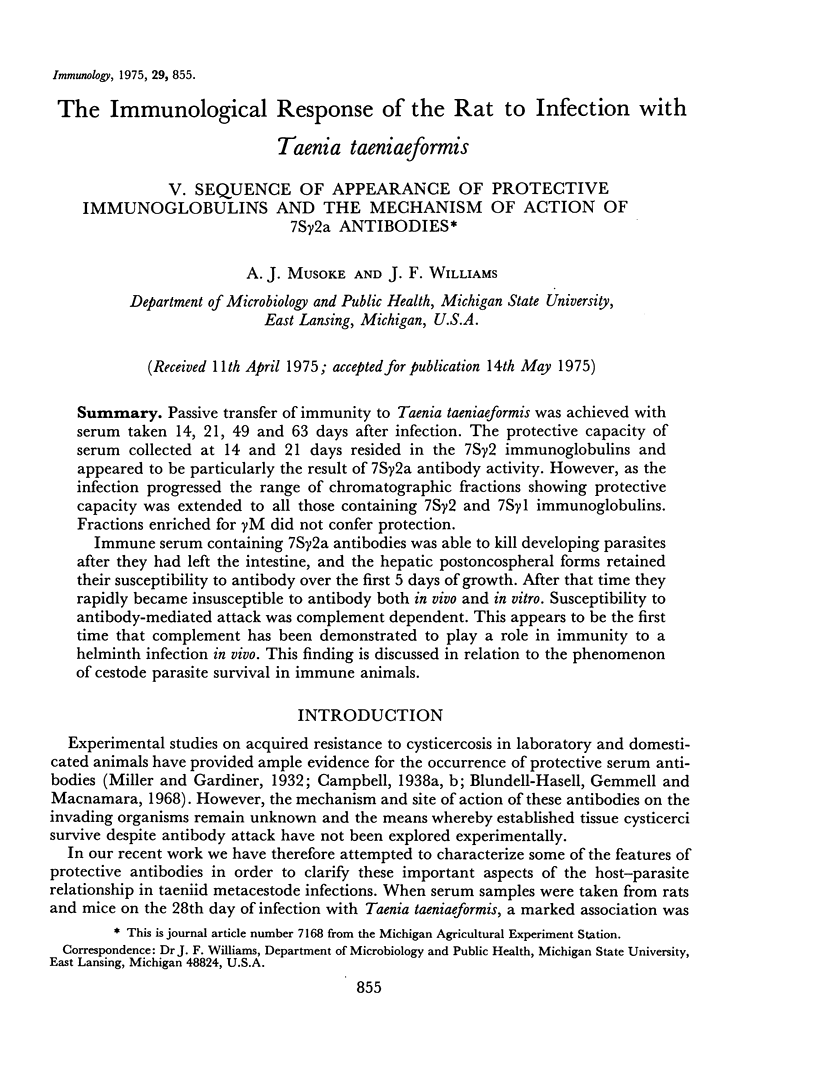
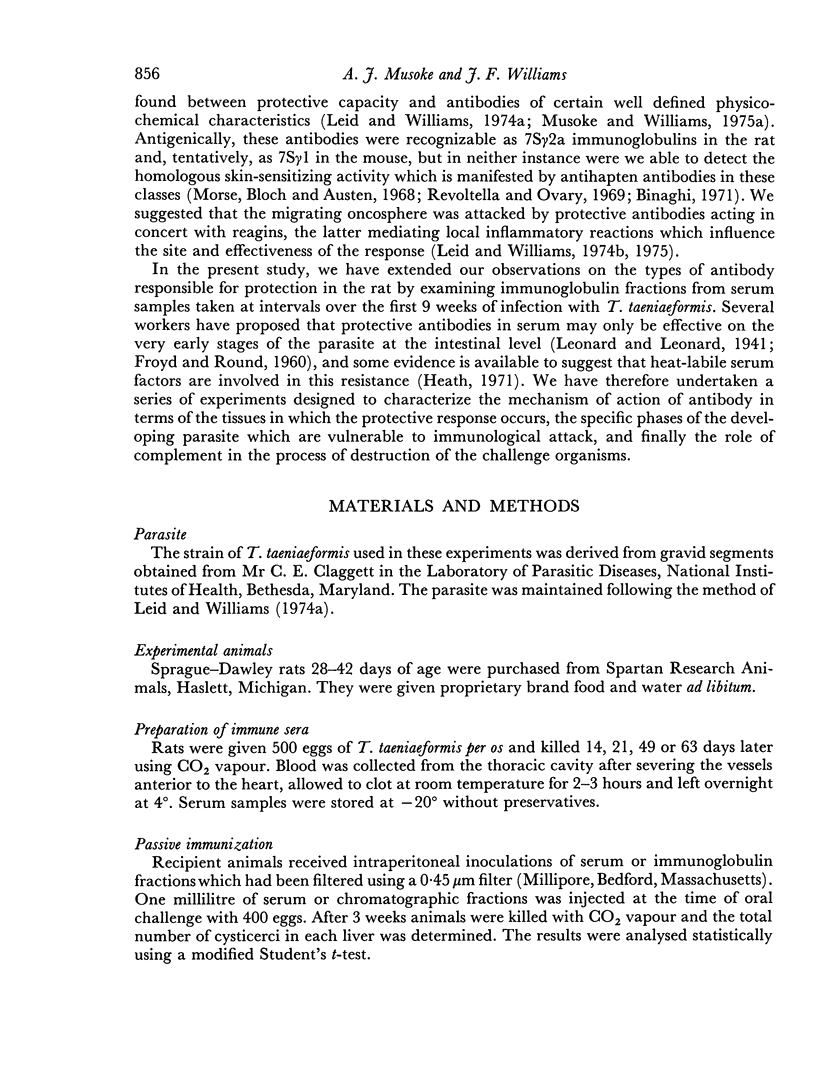
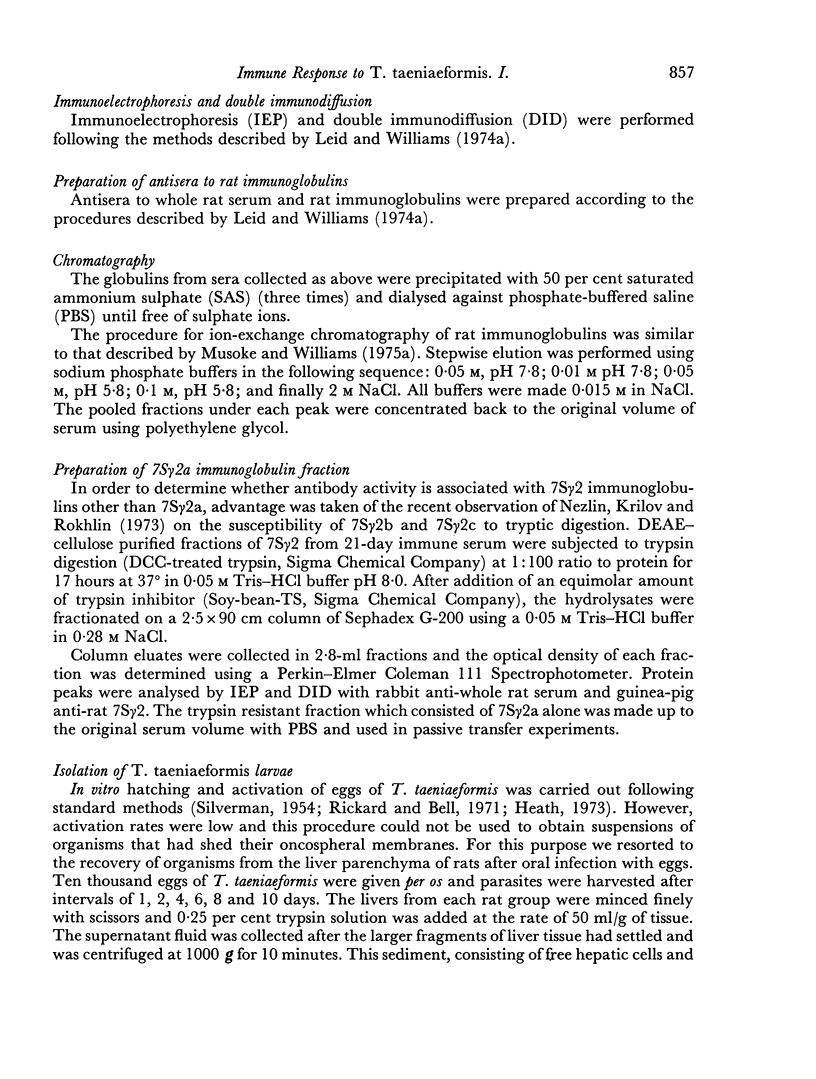
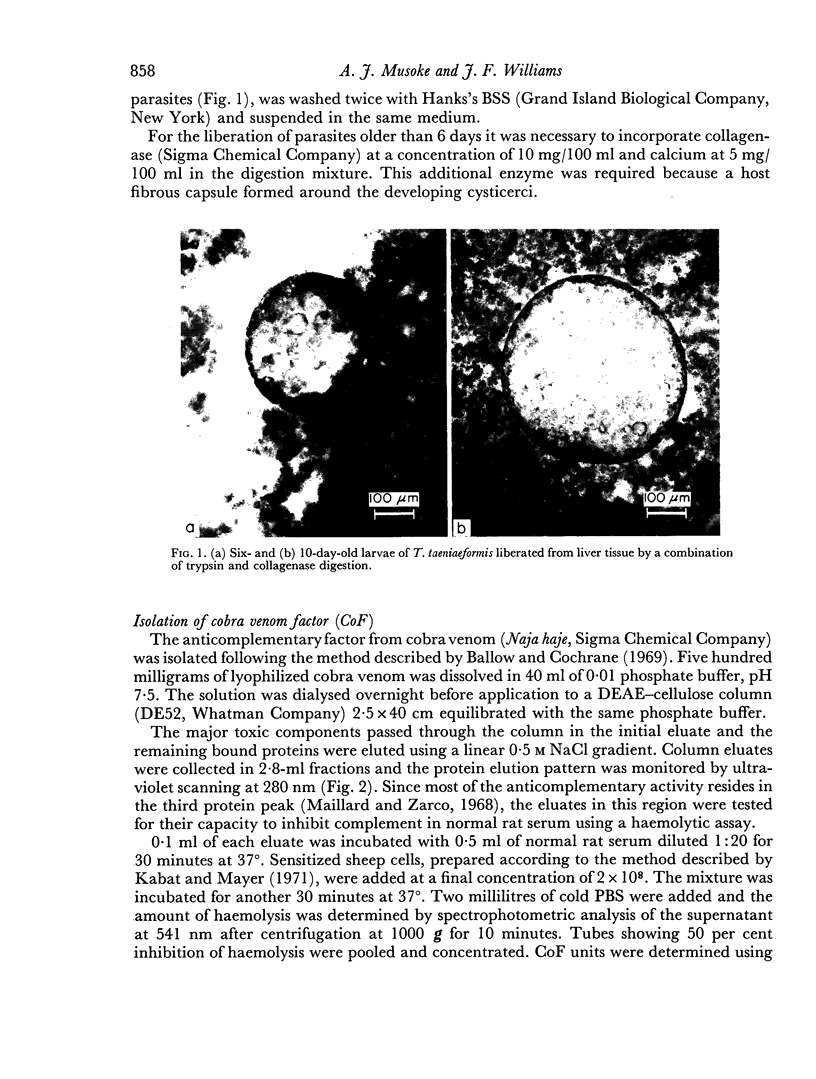
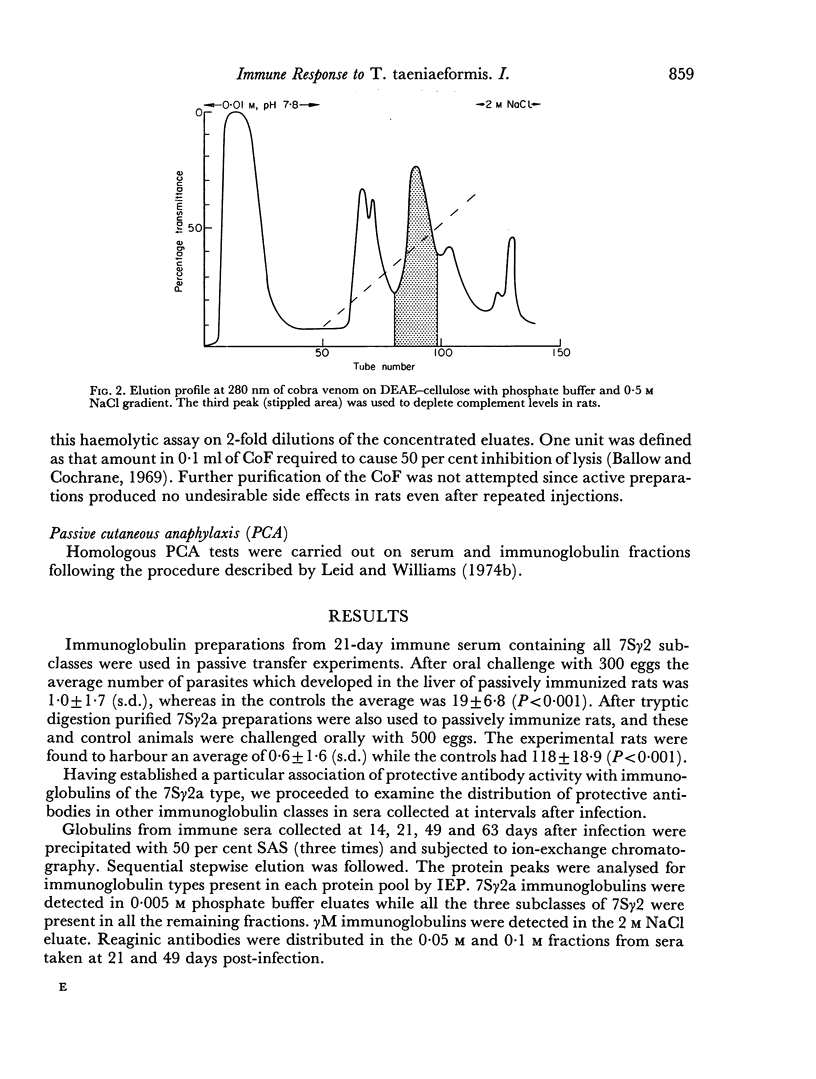
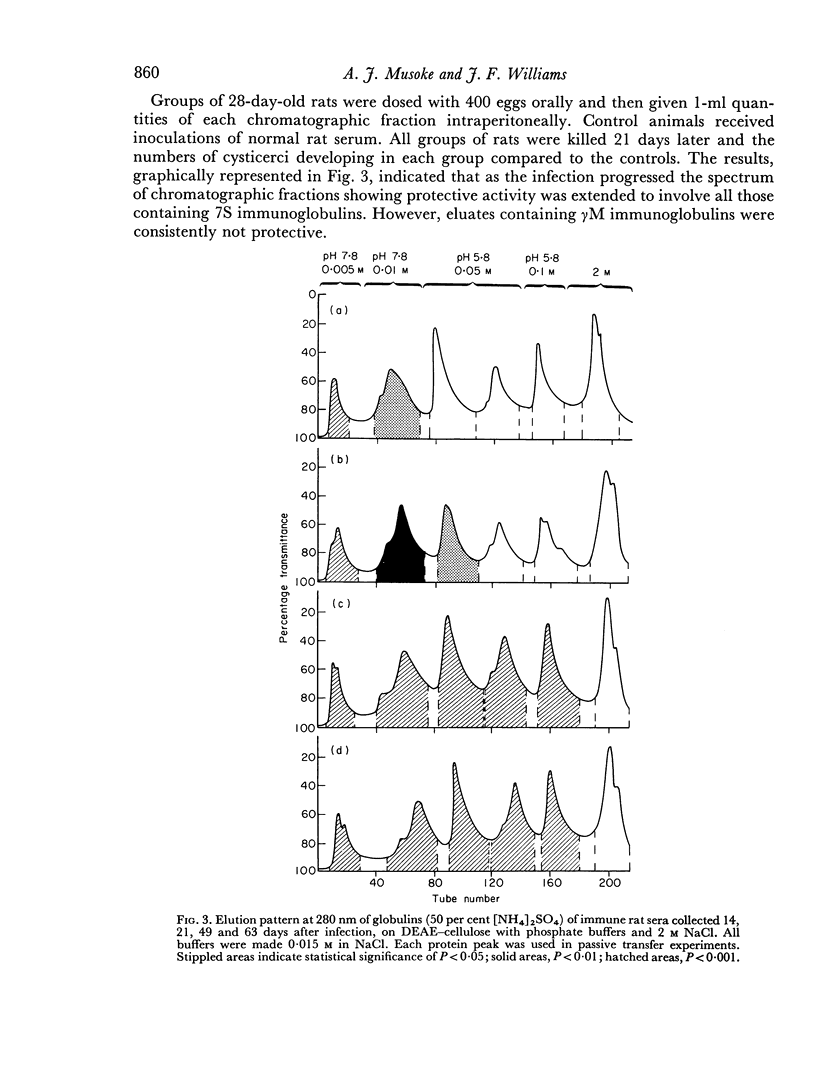
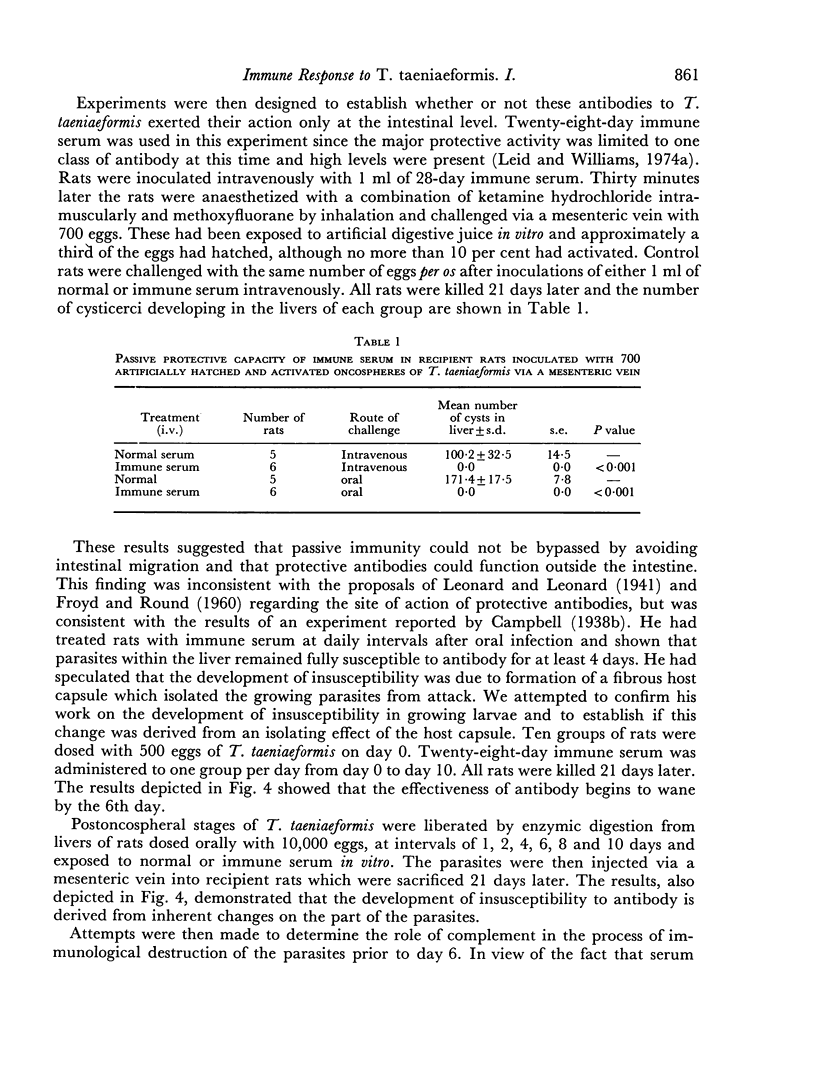

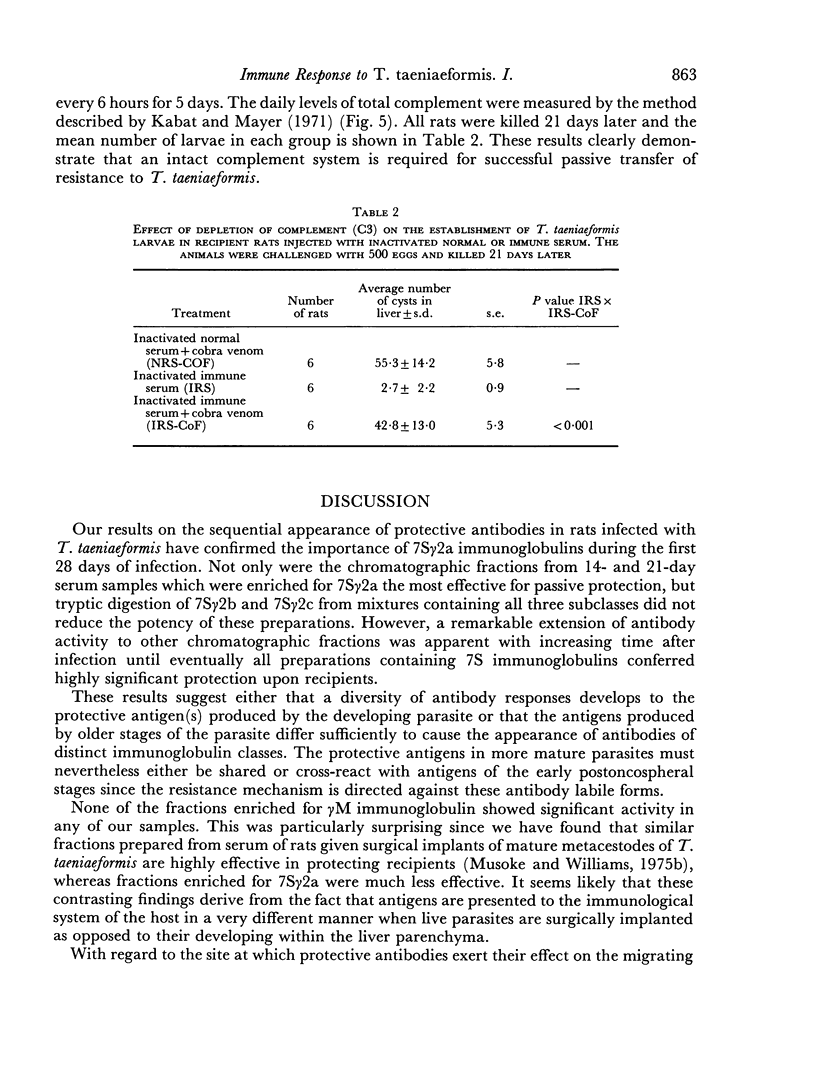
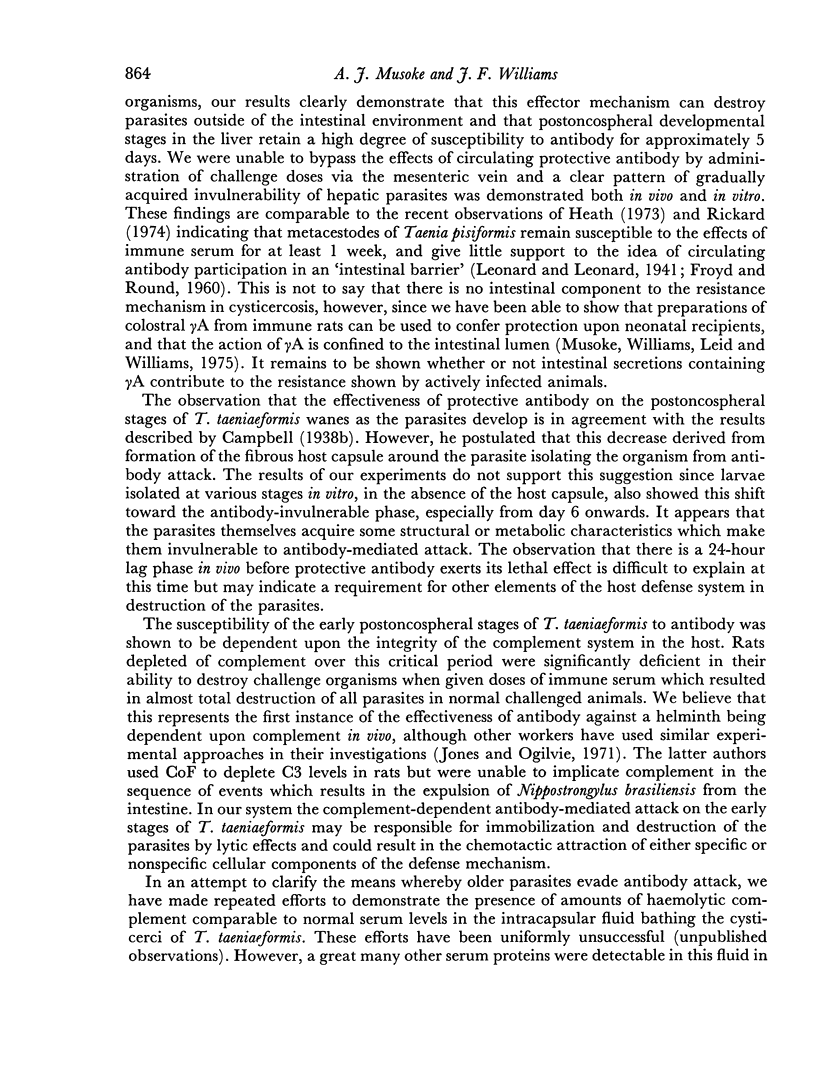
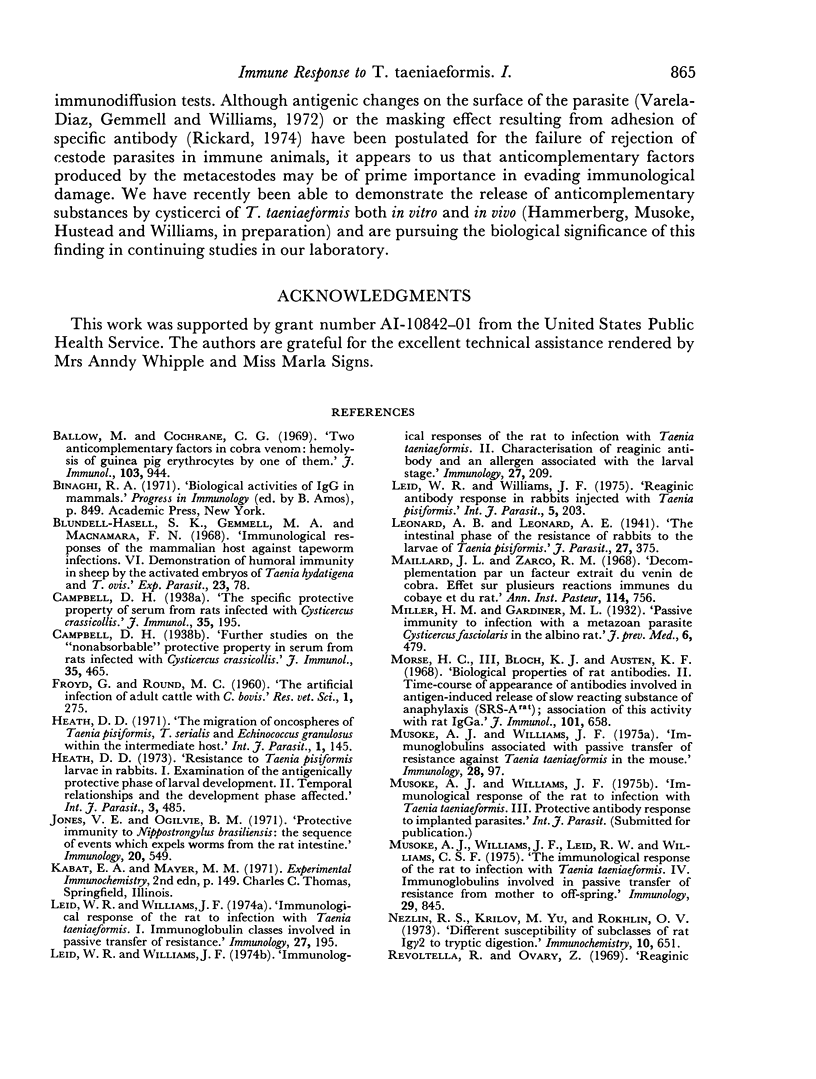
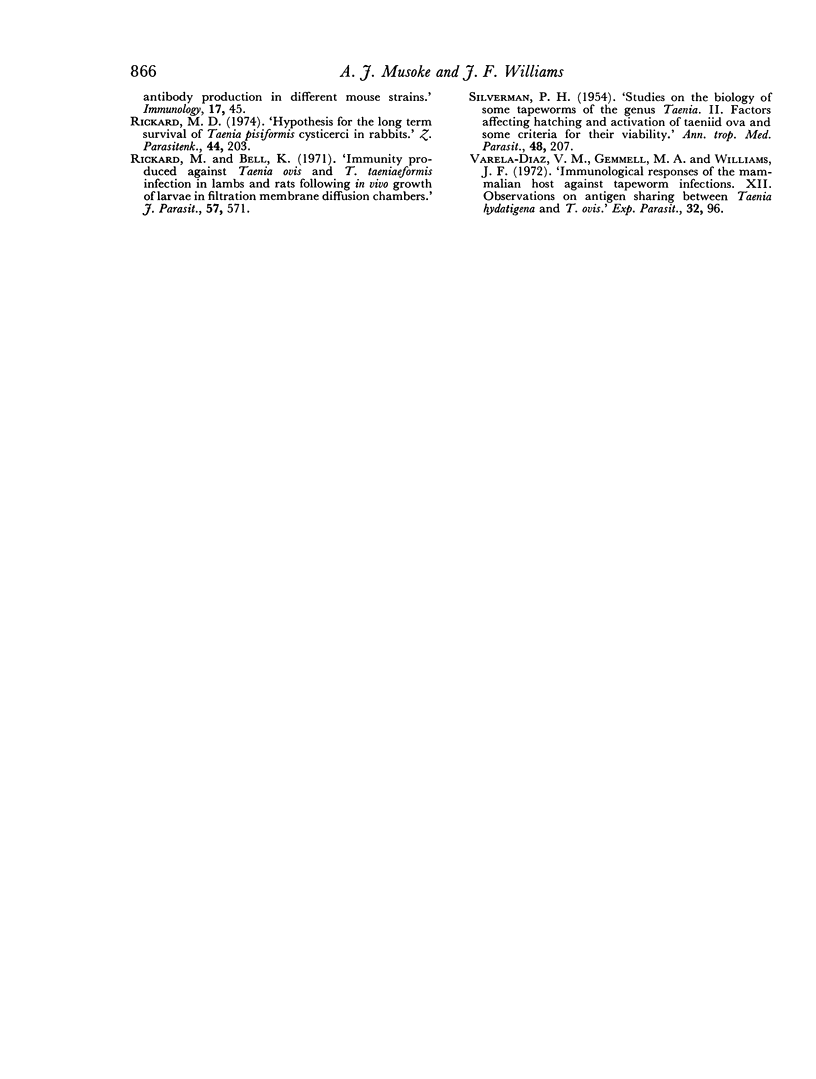
Images in this article
Selected References
These references are in PubMed. This may not be the complete list of references from this article.
- Ballow M., Cochrane C. G. Two anticomplementary factors in cobra venom: hemolysis of guinea pig erythrocytes by one of them. J Immunol. 1969 Nov;103(5):944–952. [PubMed] [Google Scholar]
- Heath D. D. The migration of oncospheres of Taenia pisiformis, T. serialis and Echinococcus granulosus within the intermediate host. Int J Parasitol. 1971 Sep;1(2):145–152. doi: 10.1016/0020-7519(71)90008-7. [DOI] [PubMed] [Google Scholar]
- Jones V. E., Ogilvie B. M. Protective immunity to Nippostrongylus brasiliensis: the sequence of events which expels worms from the rat intestine. Immunology. 1971 Apr;20(4):549–561. [PMC free article] [PubMed] [Google Scholar]
- Leid R. W., Williams J. F. Reaginic antibody response in rabbits infected with Taenia pisiformis. Int J Parasitol. 1975 Apr;5(2):203–208. doi: 10.1016/0020-7519(75)90030-2. [DOI] [PubMed] [Google Scholar]
- Leid R. W., Williams J. F. The immunological response of the rat to infection with Taenia taeniaeformis. I. Immunoglobulin classes involved in passive transfer of resistance. Immunology. 1974 Aug;27(2):195–208. [PMC free article] [PubMed] [Google Scholar]
- Leid R. W., Williams J. F. The immunological response of the rat to infection with Taenia taeniaeformis. II. Characterization of reaginic antibody and an allergen associated with the larval stage. Immunology. 1974 Aug;27(2):209–225. [PMC free article] [PubMed] [Google Scholar]
- Maillard J. L., Zarco R. M. Décomplémentation par un facteur extrait du venin de cobra. Effet sur plusieurs réactions immunes du cobaye et du rat. Ann Inst Pasteur (Paris) 1968 Jun;114(6):756–774. [PubMed] [Google Scholar]
- Morse H. C., 3rd, Bloch K. J., Austen K. F. Biologic properties of rat antibodies. II. Time-course of appearance of antibodies involved in antigen-induced release of slow reacting substance of anaphylaxis (SRS-A rat); association of this activity with rat IgGa. J Immunol. 1968 Oct;101(4):658–663. [PubMed] [Google Scholar]
- Musoke A. J., Williams J. F. Immunoglobulins associated with passive transfer of resistance to Taenia taeniaeformis in the mouse. Immunology. 1975 Jan;28(1):97–101. [PMC free article] [PubMed] [Google Scholar]
- Musoke A. J., Williams J. F., Leid R. W., Williams C. S. The immunological response of the rat to infection with taeniaeformis. IV. Immunoglobulins involved in passive transfer of resistance from mother to offspring. Immunology. 1975 Nov;29(5):845–853. [PMC free article] [PubMed] [Google Scholar]
- Nezlin R. S., Krilov M. Y., Rokhlin O. V. Different susceptibility of subclasses of rat IgG2 to tryptic digestion. Immunochemistry. 1973 Sep;10(9):651–652. doi: 10.1016/0019-2791(73)90168-7. [DOI] [PubMed] [Google Scholar]
- Revoltella R., Ovary Z. Reaginic antibody production in different mouse strains. Immunology. 1969 Jul;17(1):45–54. [PMC free article] [PubMed] [Google Scholar]
- Rickard M. D., Bell K. J. Immunity produced against Taenia ovis and T. taeniaeformis infection in lambs and rats following in vivo growth of their larvae in filtration membrane diffusion chambers. J Parasitol. 1971 Jun;57(3):571–575. [PubMed] [Google Scholar]
- Rickard M. D. Hypothesis for the long term survival of Taenia pisiformis cysticerci in rabbits. Z Parasitenkd. 1974;44(3):203–209. doi: 10.1007/BF00328762. [DOI] [PubMed] [Google Scholar]
- SILVERMAN P. H. Studies on the biology of some tapeworms of the genus Taenia. I. Factors affecting hatching and activation of taenid ova, and some criteria of their viability. Ann Trop Med Parasitol. 1954 Jun;48(2):207–215. [PubMed] [Google Scholar]
- Varela-Diaz V. M., Gemmell M. A., Williams J. F. Taenia hydatigena and T. ovis: antigen sharing. XII. Immunological responses of the mammalian host against tapeworm infections. Exp Parasitol. 1972 Aug;32(1):96–101. doi: 10.1016/0014-4894(72)90013-6. [DOI] [PubMed] [Google Scholar]



